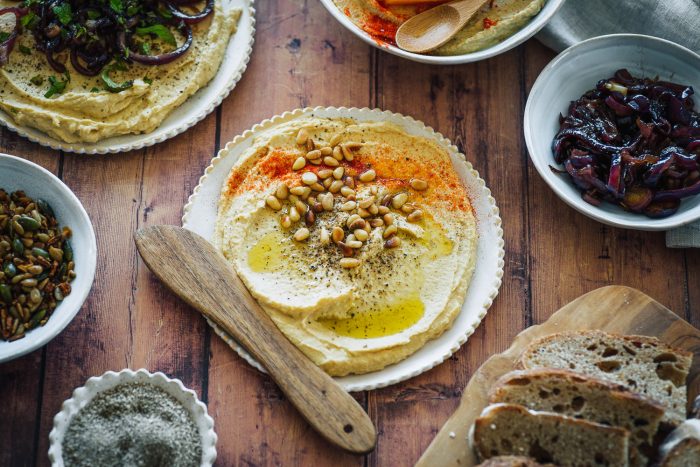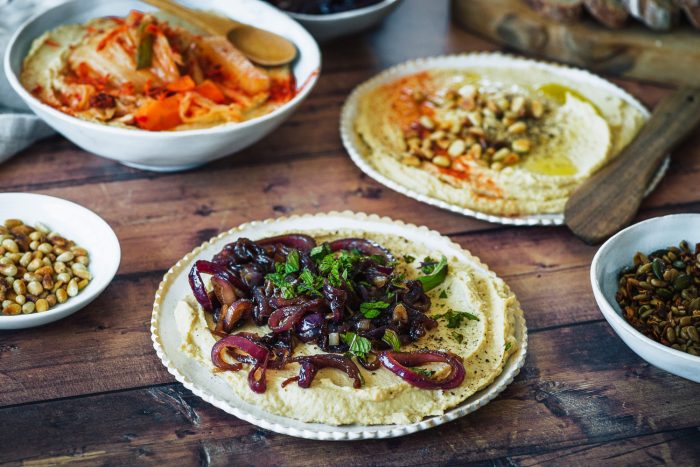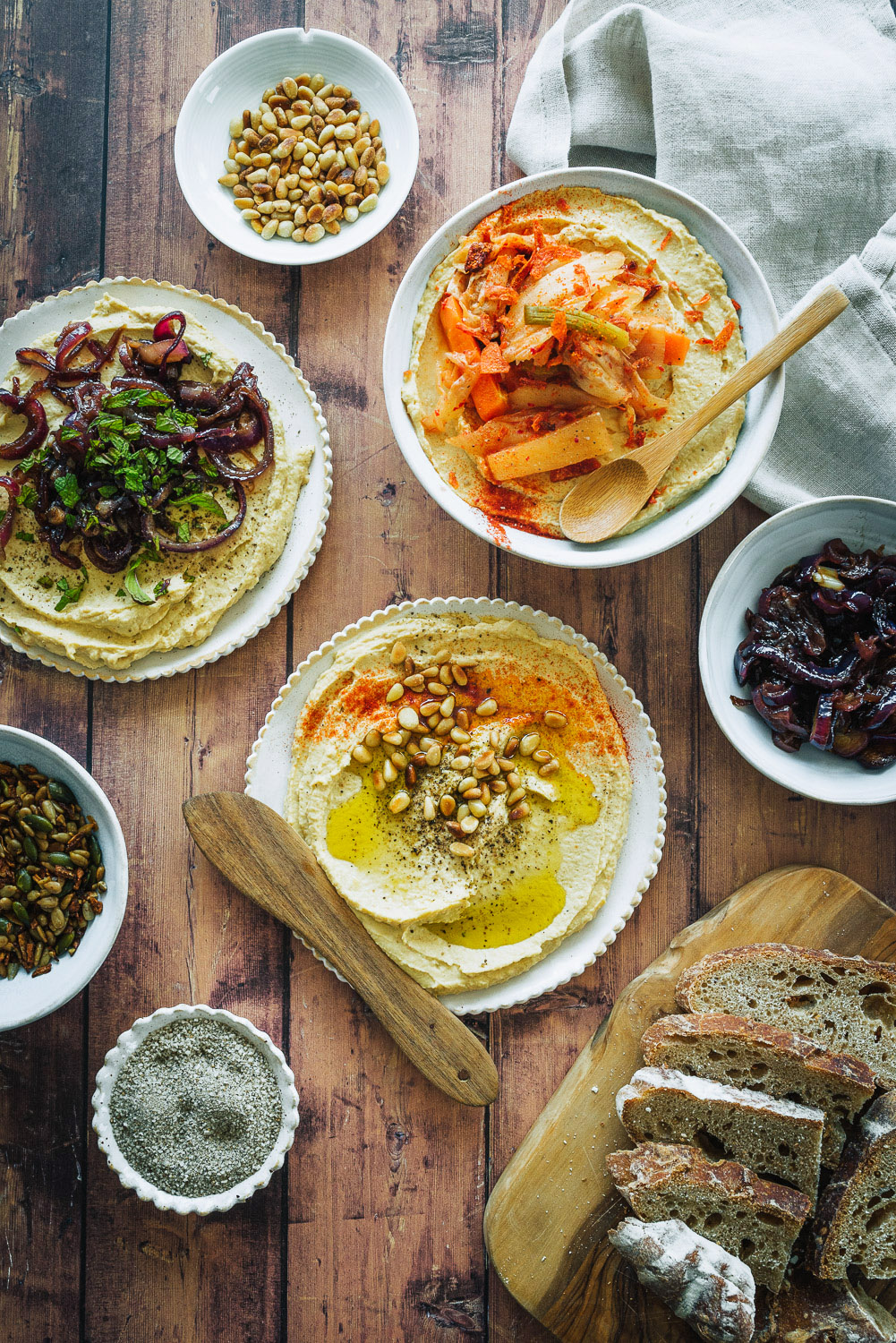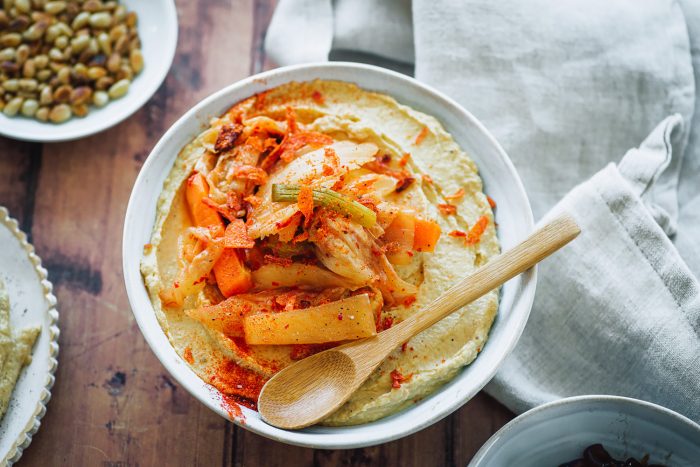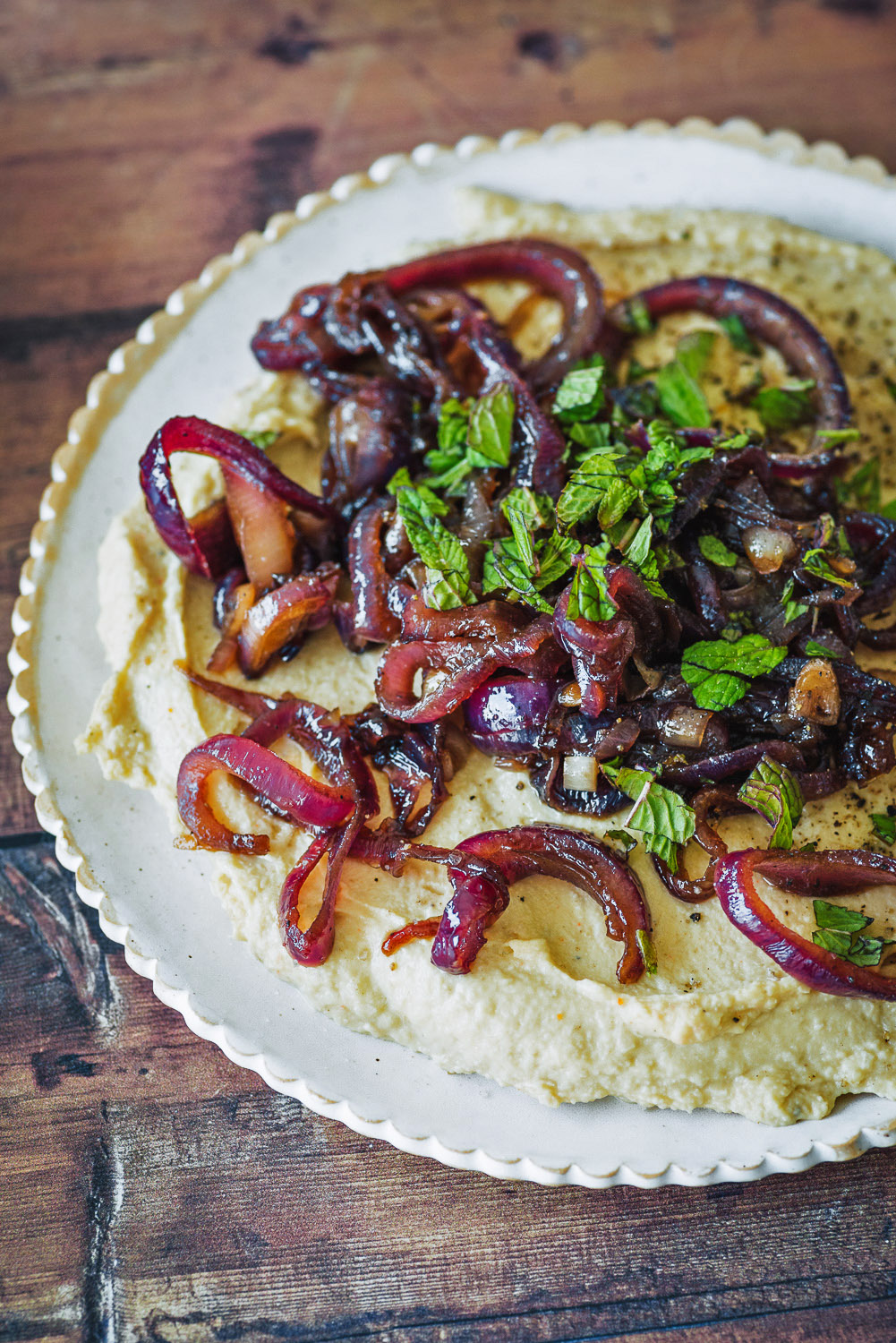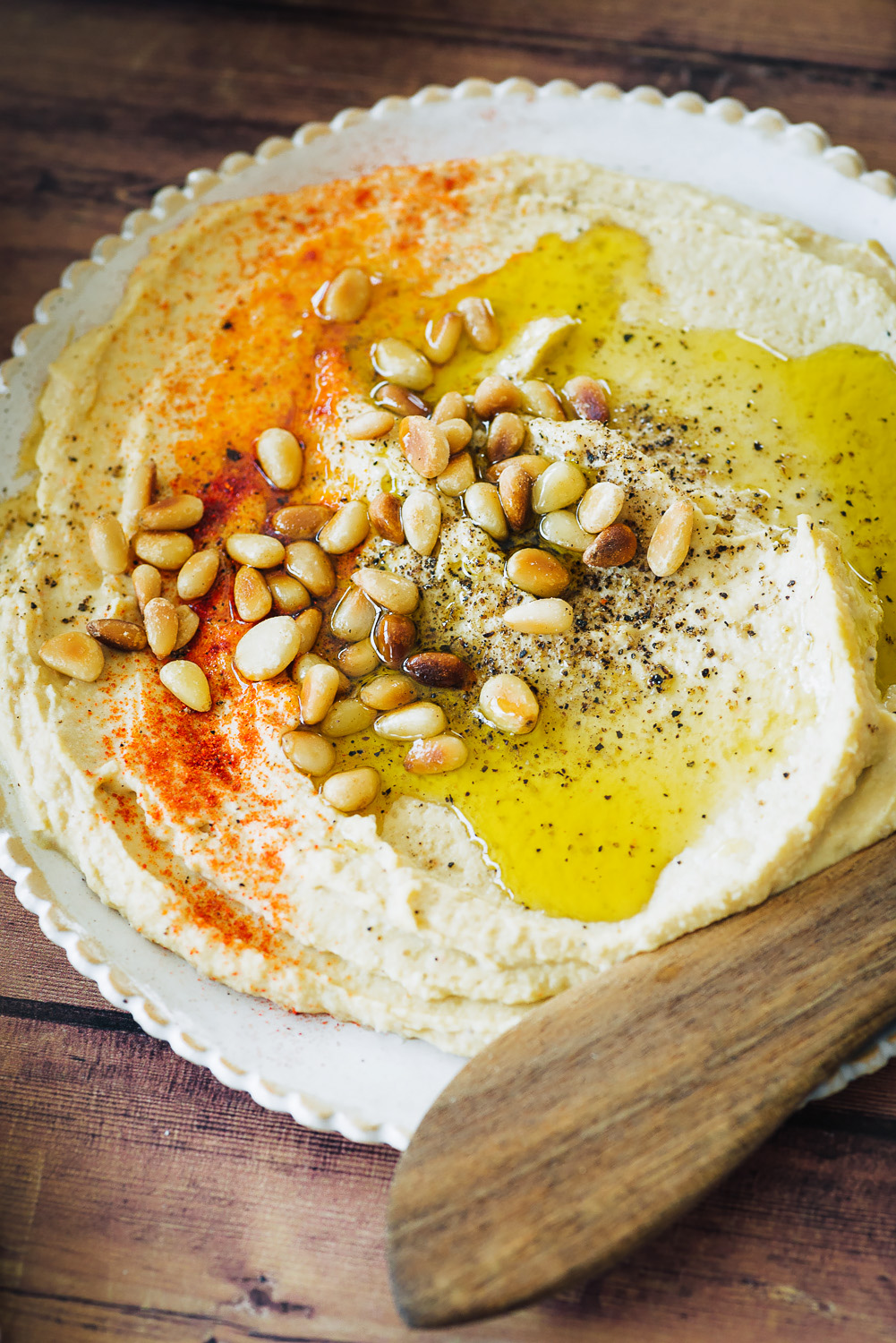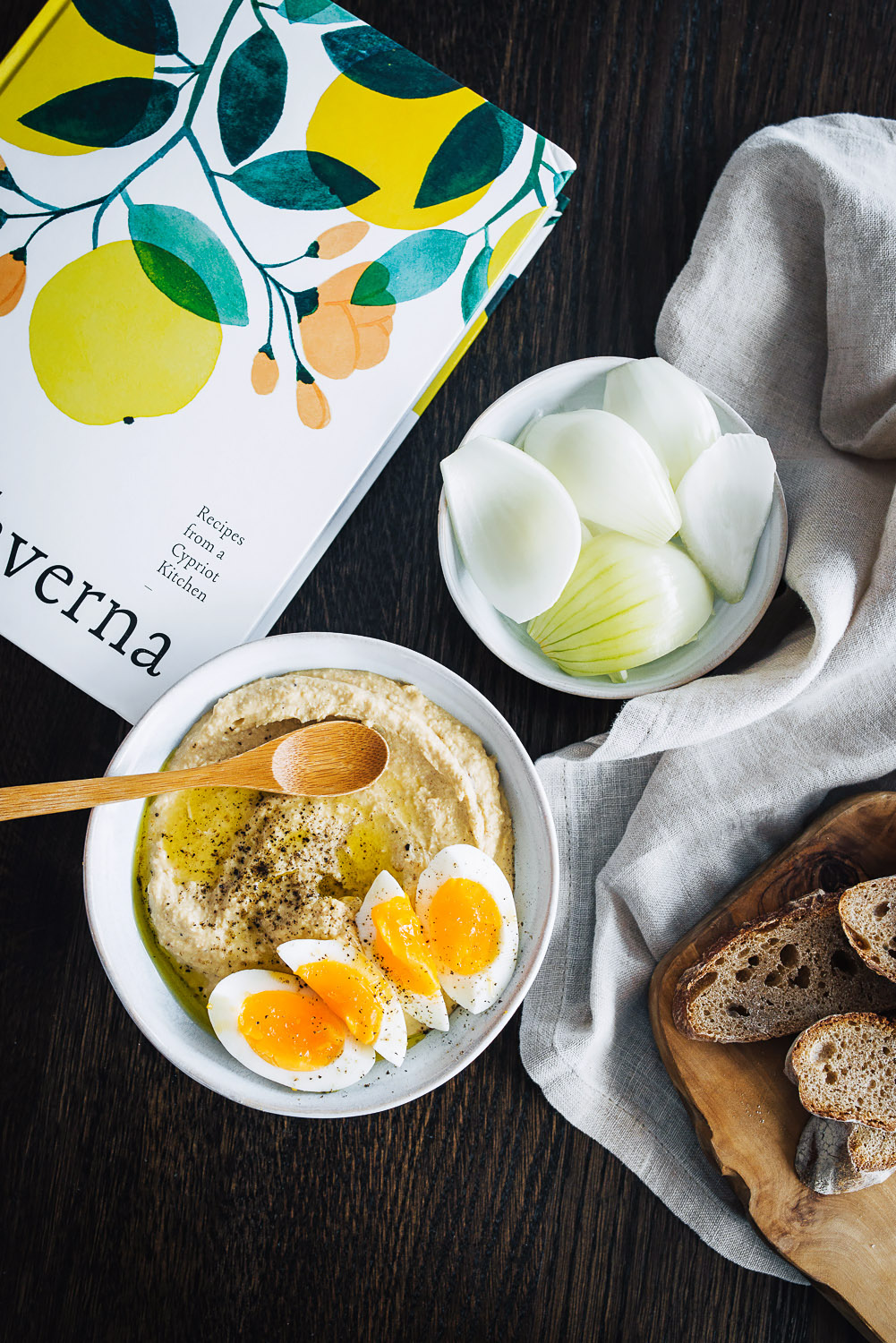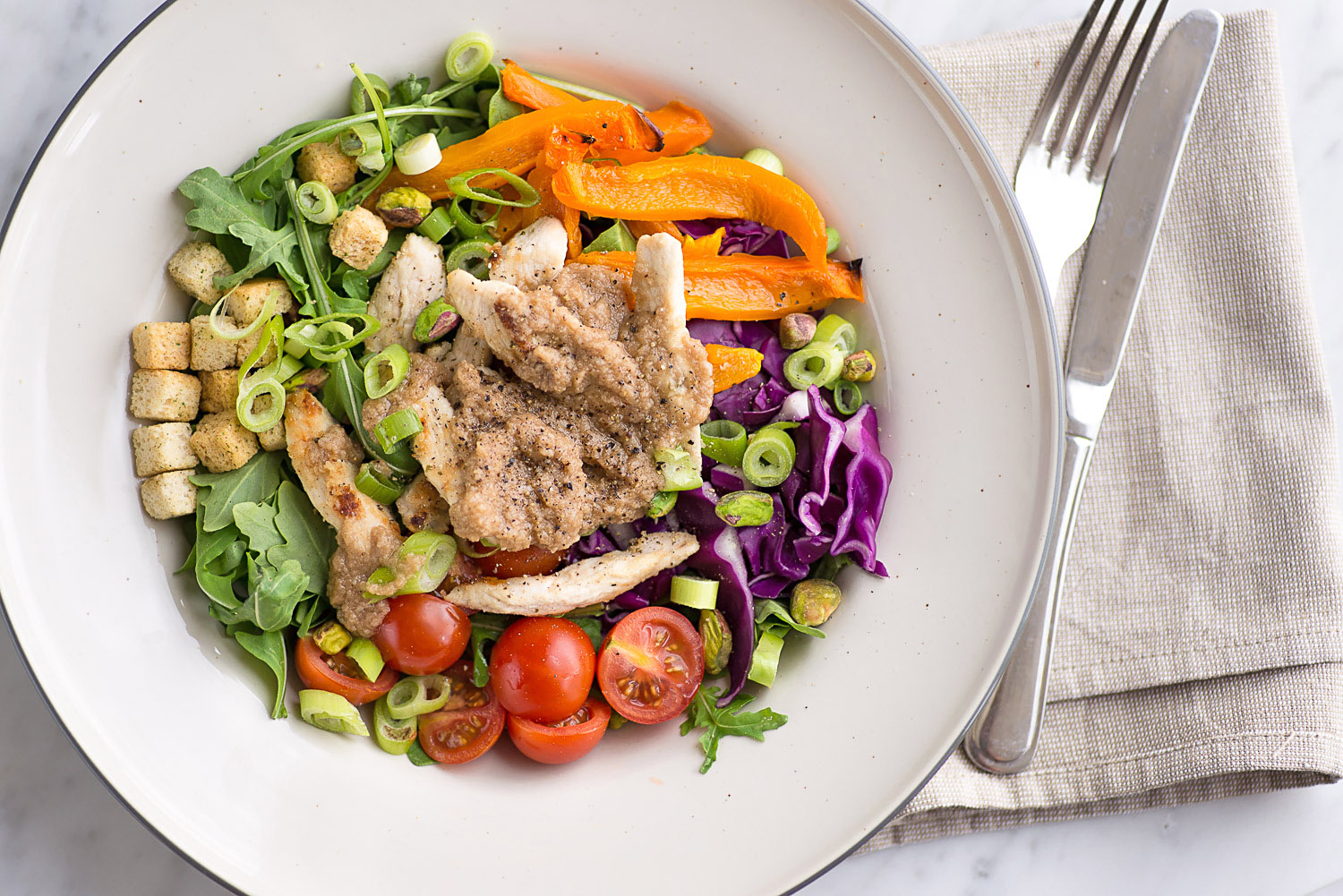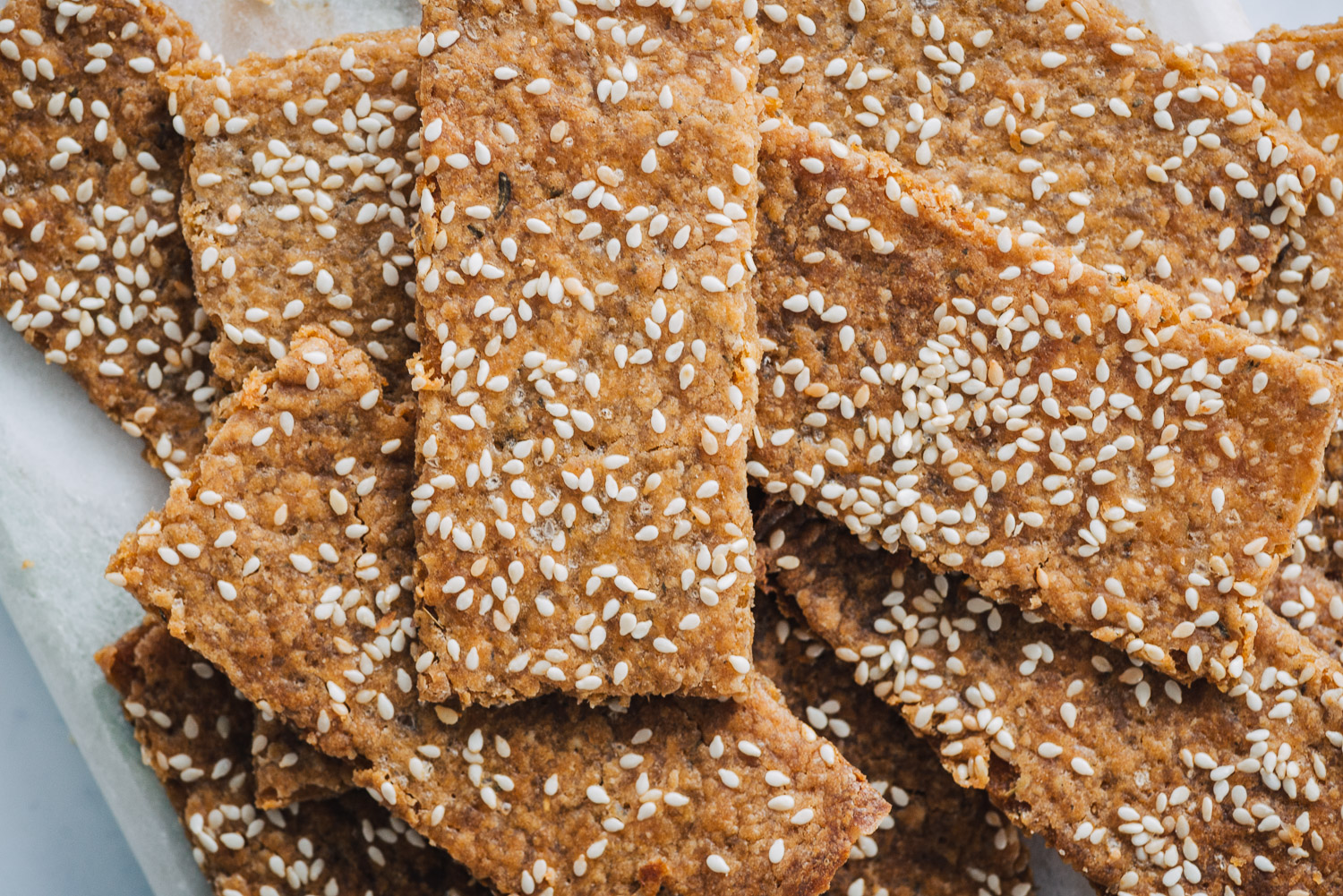I have finally found the perfect recipe to make a creamy, delicious and healthy hummus at home. In this post, I am also sharing three ideas to serve your homemade hummus: with caramelised red onions and fresh mint; with kimchi; with olive oil, paprika and toasted pine nuts.
I have cooked every day for two months with varying degrees of success. I’ve prepared a lot of tasty dishes, but I also had a few “fails”. One dish I definitely aced during this lockdown period has been hummus. And that’s entirely thanks to the recipe I used – from Taverna, Georgina Hayden’s cookbook.
Georgie is a London based Greek Cypriot food stylist and writer. I’ve never met her, though I feel like I have, as I have been following her on Instagram for many years. Taverna, her second cookbook published in 2019 (a follow up to her 1st book is Stirring Slowly), is a collection of authentic Greek Cypriot recipes collected by Georgie and her family over many years.
Growing up in Rome, hummus was never a part of my family’s diet. I never even tasted it until I moved to London. And even then, it was the supermarket-bought hummus variety – hardly an authentic experience! When the Middle-Eastern food trend swept up the London’s restaurant scene I finally tasted the real hummus, made fresh and served warm. Then, on two separate trips to Tel Aviv I had the chance to familiarise myself with the real taste and texture of homemade hummus.
Hummus is prepared with a combination of four ingredients: chickpeas, tahini, lemon and garlic. What makes this dish perfect is the proportion of each ingredient; and the quality of the key flavour maker: the tahini. An ingredient I love and often use in baking.
I used to think of hummus as just a dip to serve as an appetiser, with crackers and carrot sticks, the classic party starter trick. Nowadays I treat hummus as a full meal and so I like to top it with a variety of condiments, vegetables and eggs to create a balanced dish.
The best toppings for your homemade hummus
For lunch last Sunday, I served the hummus in three ways: with caramelised red onions and fresh mint; with kimchi; with olive oil, paprika and toasted pine nuts and soft boiled eggs on the side.
Other ideas for toppings are: jalapeños; roast garlic; pan-fried mushrooms; crunchy masala chickpeas; or with a side of tabbouleh salad (you can find the perfect recipe in Jerusalem by Yotam Ottolenghi).
Of course, one of the best pairings ever for hummus is falafel! Here’s the perfect falafel recipe.
In Tel Aviv, I ate hummus drizzled on shakshuka (a dish of of slow-cooked tomatoes, onion, spices and poached eggs on top).
If you eat meat, you can hummus serve it with fried spiced lamb (a Lebanese recipe called hummus kawarma) or grilled chicken skewers.
I’ve started baking sourdough bread recently so that’s what we ate with the hummus, but if you have pita bread that’s even better.
If you don’t want to eat bread (or limit the amount you eat for health reasons or dietary requirements) here’s a great trick I learnt in Tel Aviv: scoop up the hummus with big slices of white onions! It adds a punchy, spicy and addictive flavour to your hummus.
Note: if you choose not to use dried chickpeas (although I highly recommend that you do, because the result will be so much better), you can use two 400g tins of chickpeas (you won’t need the bicarbonate of soda in this case).
Recipe by Georgina Hayden (Taverna, 2019).
Ingredients
serves 6-8
- 250g dried chickpeas
- 3 teaspoons bicarbonate of soda
- 1 garlic clove, peeled and crushed
- 1 lemon, juiced
- 100g tahini
- sea salt
- black pepper
To serve
- good quality extra virgin olive oil
- paprika
- toasted pine nuts
OR
- caramelised red onions
- fresh mint
OR
- kimchi
To scoop up the hummus
- white onion slices
- pita bread
Preparation
Place the chickpeas in a large bowl fully covered with cold water. Add the bicarbonate of soda and cover loosely with cling film. Leave to soak for 24 hours. The next day, drain and rinse the chickpeas well. Place in a large saucepan, cover with water and place on a high heat. Bring to the boil, then reduce to a simmer. Cook for around one hour. The chickpeas should be soft, so if they’re not quite there, keep cooking. When the chickpeas are soft, remove the pan from the heat and leave to cool completely in the cooking liquid. Drain the chickpeas, but keep the liquid aside in a small jug, as you will need it later.
In a food processor, combine the garlic, lemon juice, tahini and a splash of the chickpea water. Blitz until you have a loose, pale paste. Then add the drained chickpeas and a pinch of salt. Blitz the hummus until creamy. Keep adding a splash of chickpea liquid if the hummus feels too thick. Add just a little bit at a time until you have obtained the right consistency.
If you are not going to eat the hummus immediately, transfer it to an airtight container and store in the fridge for maximum 4-5 days. Bring back up to room temperature before serving.
To serve, spoon the hummus on to a plate or shallow bowl and add your favourite toppings!
Disclaimer: I received a copy of Taverna cookbook from the publishers. All opinions are my own.

